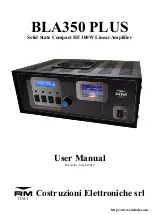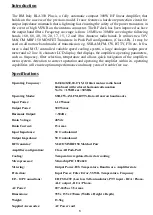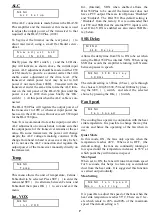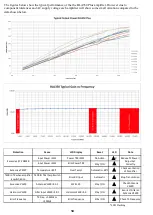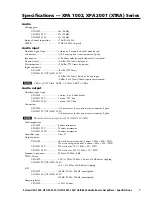
depends on how the equipment is connected and the type of antenna used. There are both argu-
ments both for and against the stereotypical RF station ground. In addition to this is that light-
ning and static protection for the antenna is an additional subject in itself, however this should
be kept external to the building and will not be covered here. There are many good articles
about correct station grounding both online and in all of the usual publications on Ham Radio
from the ARRL and RSGB etc. As output power increases this becomes much more of a safety
factor and should not be ignored!
The classical RF ground consists of a series of ground rods driven into the ground over a suita-
bly large area, connected together with heavy gauge wire / copper strap and situated as close as
possible to the radio installation, to which every piece of equipment has a heavy gauge wire or
strap connecting it to RF ground. If using copper particular attention should be made to the
fact that copper corrodes and as it does, loses its conductivity properties so a certain amount of
maintenance will be required. Copper braid stripped from coaxial cable is not a good idea, if
the cable is left intact with both the centre conductor and outer insulation present it may be
utilised as a single conductor for ground connections but removing the braid will make for a
poorer RF conductor and will allow corrosion to commence. There are many ready made cop-
per braids that are manufactured especially for this use.
The distance of the RF ground to the radio installation and also the length of the individual
connections from equipment to the RF ground are very important and depend on the frequency
in use. They must be made as short as practically possible and much less than a 1/4 of a wave-
length. At 10m this may already present problems as 1/4 of a wavelength is 2.6m (28.5MHz).
If you have a 1/4 wavelength ground connection this will in fact present a high impedance and
will impede the flow of RF to ground.
Antenna type, (Balanced or unbalanced), fed with coaxial cable or balanced feeder, proximity
of the antenna to the radio installation, Antenna tuners and BALUNS etc. All have an effect on
system performance and safety. Typical examples are unbalanced antennas that cause RF to
return back along the outside of the coaxial cable screen and thus the equipment connected to
it. One possible cause of ‘RF in the shack’. And can create many different issues, such as tin-
gling to the lips when touching a metal microphone grille, or a tingling sensation when touch-
ing the CW key or metal equipment chassis, rebooting computers, RF distortion on the trans-
mitted audio, etc .
Just because your station functions or appears to function with out any of the above issues at
low power, doesn’t mean that these problems are not present or that the problem is with the
power amplifier.
Never ever use a metal gas pipe as your station ground connection! Cold water pipes are often
not suitable either.
Warning
Dangerous high voltages exist inside the amplifier and as such we recommend that the cover
only be removed by qualified service technicians. Before removing the cover from the ampli-
fier it is essential that the AC power cable, coaxial cables to the antenna and transceiver are
disconnected. If during operation it is noticed an abnormal noise or odour, switch off the am-
plifier immediately and check all of the connecting cables and if necessary return to an author-
ised service centre for testing. Do not subject the amplifier to physical shock, high humidity,
dusty environments or excessive heat. Periodically clean any accumulated dust from the am-
plifier especially around the ventilation grilles / fan intakes. Do not exceed more than 14W on
the input to the amplifier. Excessive drive may cause damage and invalidate the warranty.
5
Содержание BLA350 PLUS
Страница 2: ......

